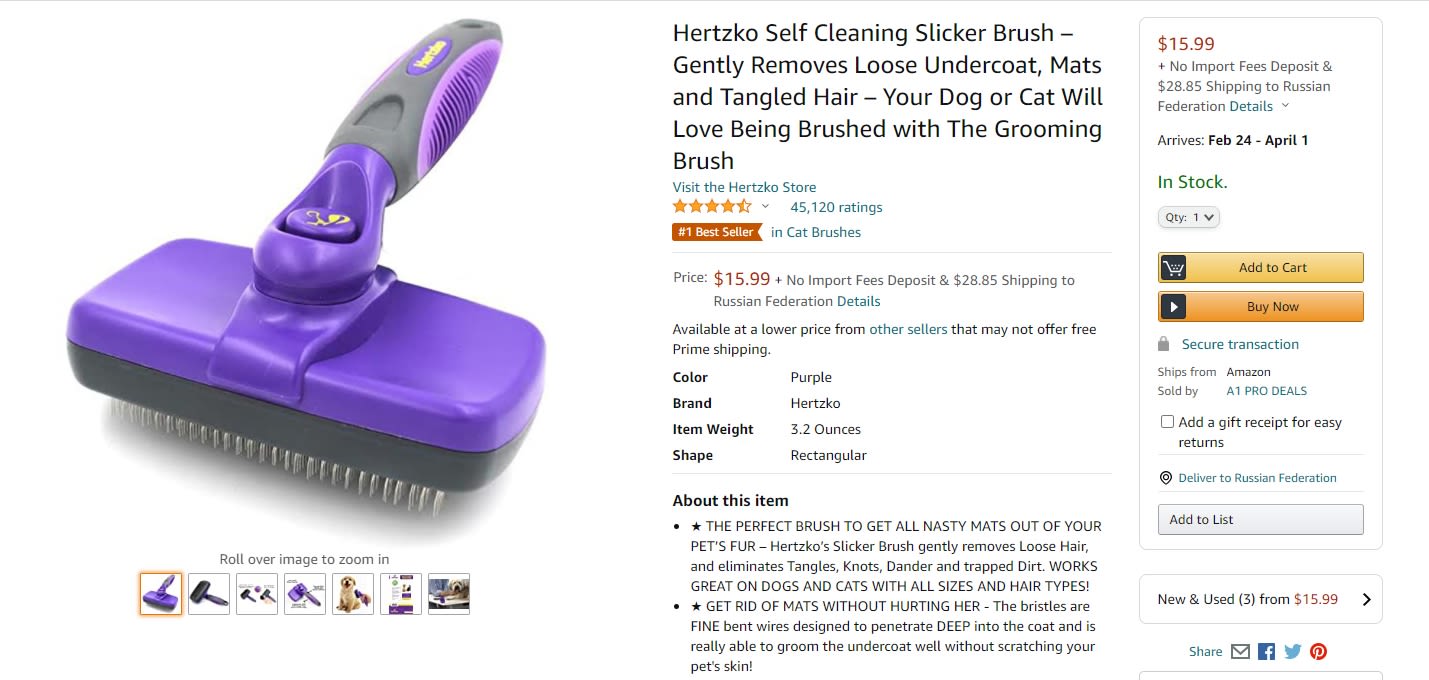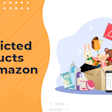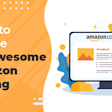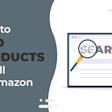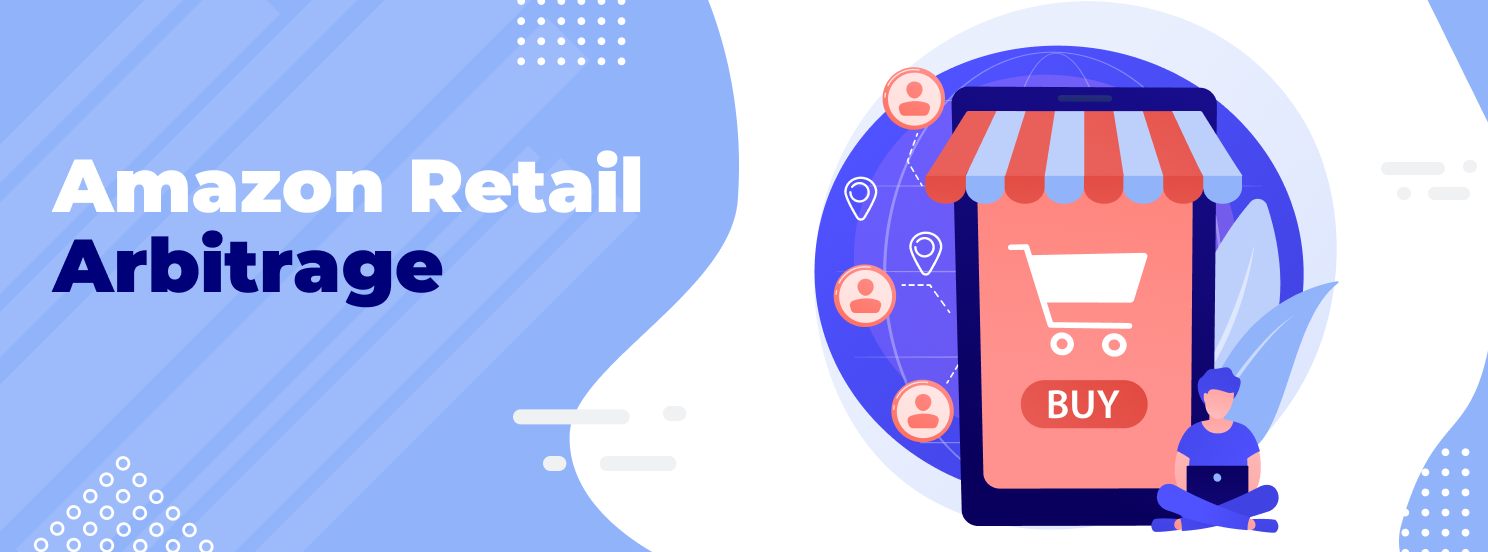
What is Retail Arbitrage and How to Start on Amazon
Have you ever thought about selling on Amazon but didn’t want to have to deal with suppliers or large inventory orders? Then retail arbitrage might be for you.
Lots of sellers are using this strategy in the US, UK, Canada, and more to build profitable businesses, and the best part is anyone can do it.
Table of contents
So what exactly is retail arbitrage and how do you get started? Keeping reading this guide to learn everything you need to know.
What is Retail Arbitrage?
Retail arbitrage is when you buy a product from a retail store and sell it on another marketplace (like Amazon). The price of items often varies from one location to another. Sellers can take advantage of this by purchasing products in their local area at a discount and then reselling them somewhere else at a higher price.
So, for example, let’s say you’re looking for products to sell on Amazon. What you would do is visit your local retail stores and search for items that are selling for less than they are on Amazon.
Then, you’d buy up those products, list them for a higher price on Amazon, and earn a profit on the price difference.
Is Retail Arbitrage Legal?
Retail arbitrage is 100% legal. While some businesses may not like you flipping their items for a profit, according to the US Supreme Court they can’t stop you from doing this. As long as you acquire a product legally you’re allowed to resell it.
Just to be safe though, always keep your receipts so you can prove how you acquired your merchandise. And never resell counterfeit goods, as that’s a quick way to get in trouble with the law and violate Amazon’s policy.
The Pros and Cons of Retail Arbitrage
No selling strategy is perfect and there will be advantages and disadvantages to whatever business model you choose. With that said, here are the pros and cons of retail arbitrage:
Pros
You Can Start with a Small Budget: When you’re doing retail arbitrage you can buy as much or as little as you can afford. Because there are no minimum order quantities like there are with suppliers you can essentially start with just a few dollars.
You Don’t Have to Source Suppliers: Lots of people find sourcing and dealing with overseas suppliers to be overwhelming. This is especially true if you’ve never done that before. But with retail arbitrage, you’re just buying from local stores.
It Teaches You How to Sell on Amazon: By doing retail arbitrage, you’ll learn all about creating listings, finding keywords, collecting reviews, and more. If you ever decide to source products from suppliers or manufacturers you’ll already have half the process figured out.
It’s Great for Beginners: Because of the low budget requirements and its simplicity, this is the definition of a business model for beginners. If you’re looking to just try selling on Amazon it’s easy to buy a few items from your local store and then resell them online.
Cons
It’s Time-Consuming: Driving from store to store looking for deals takes a lot of time. While this strategy can be profitable it will likely take up a lot more of your time than simply placing an order from a supplier.
It’s Difficult to Scale: Because of how time-consuming it is, and the lower margins, the strategy is difficult to scale. You’ll likely reach a point where you’re making as much as you possibly can and the only way to grow your business further will be to start working with wholesalers and manufacturers. Automation is also difficult with retail arbitrage.
Lots of Competition: Most of the items you’ll be selling will already be sold on Amazon, meaning you’ll share the buy box with other sellers. This makes it more difficult to sell your products.
You Don’t Own Your Brand: It’s hard to build a brand when you’re just reselling other people’s stuff. If you really want to grow a loyal following you’ll need to work with a manufacturer to create a private label product that no one else is offering.
Overall, retail arbitrage is worth it for new sellers or people looking to sell on Amazon part-time. But if you want to build a full-time business and establish a brand you may need to look into another business model.
How to Start Retail Arbitrage on Amazon
While retail arbitrage can be performed on any online marketplace, the most popular place to use this strategy is Amazon. So, we’re going to walk you through all the steps you need to take to buy a product and resell it on their marketplace.
Here are seven steps required for retail arbitrage on Amazon:
Sign up for an Amazon seller account.
Do product research.
Visit local retailers to find merchandise.
Scan products with the Amazon Seller App.
Determine whether you can sell the product.
Decide how much to buy.
List your items on Amazon.
We’ll dive into each of these steps in more detail below.
1. Sign Up for an Amazon Seller Account
Before you start selling on Amazon you need to register for a seller account. You can get started here.
Click “Sign Up” to register for a Professional Seller account, or scroll down and select “Sign up to become an individual seller” to register for an Individual Seller account.
The Individual Seller account is free to have but you’ll pay an additional $0.99 for each sale you make. The Professional Seller account costs $39.99 per month but the $0.99 fee is waived.
So, how do you know which account is best for you? Well, if you plan to sell fewer than 40 items a month you’ll save money with an Individual account. If you expect to sell more than that the Professional account will be more cost-effective for you.
Follow the directions to complete the application process. You’ll need to provide Amazon with a piece of ID, a credit card, and your tax information.
2. Do Product Research
What you buy will largely depend on what’s available in your local area. But that doesn’t mean you shouldn’t do any product research before you go shopping.
The last thing you want to do is to buy a bunch of products and list them on Amazon, only to discover there’s no demand for them. Doing product research means you’ll define what the best items for retail arbitrage are, which allows you to make smarter purchases.
The best software to use for product research is the AMZScout PRO AI Extension. Once it’s installed, search for a product on Amazon and then open the extension once the results come up.
Within the extension you’ll be able to see:
Estimated monthly sales
Average number of reviews
Average revenue
A visibility score to judge competition levels
Sales trends
Product and niche score based on demand and profitability
Use this tool before you go shopping to figure out what to look for.
3. Visit Local Retailers
The best stores for retail arbitrage are:
Walmart
Home Depot
Target
Kmart
Shopko
Meijer
Lowes
Menards
Big Lots
Walgreens
CVS
Rite Aid
Bed Bath & Beyond
Office Depot
Staples
Big Lots
T.J. Maxx
In addition to these locations, you might be able to find some good deals at local stores as well. For example, some of the best places for retail arbitrage are stores that are moving or closing and need to liquidate their inventory, as these provide great opportunities for you.
4. Scan Products
Use the Amazon Seller App while you’re shopping to quickly see what an item is selling for on Amazon. Simply download the app and then use your smartphone to scan products and see the sales price.
Look for items that are selling for half or less of what they’re selling for on Amazon. Remember, Amazon takes a cut of every sale, so you need to leave yourself room to still make a profit after all your expenses.
Another good rule of thumb is to target products that will yield you $3 or more in profit after your expenses. This means you may need to look for higher ticket items. For example, buying a $1 product that you can resell for $3 might seem great, but after your Amazon fees, FBA expenses (if you choose that as your fulfillment method), and your cost to ship your goods, you’ll be lucky to break even.
5. Determine Whether You Can Sell the Product
There are certain brands that are restricted on Amazon. You might need special approval or you may not be able to sell them at all. You don’t want to buy inventory that you can’t resell, so it’s best just to avoid these brands altogether.
Some restricted brands include:
Adidas
Birkenstock
Crocs
Dell
Fisher-Price
HP
iPhone
Keurig
New Balance
Panasonic
Reebok
Sony
Uggs
While there is no official list, sellers have created lists of restricted brands based on their experience. You can see a complete list here.
There are also a number of categories that are restricted. These are:
Collectible Coins
Personal Safety and Household products
Entertainment Collectibles
Fine Art
Gift Cards
Jewelry
Handmade
Subscription Boxes
Any product that’s “Made in Italy”
Music & DVD
Automotive & Powersports
Sports Collectibles
Streaming Media Players
Video, DVD, & Blu-ray
Watches
The best course of action is to make sure whatever product you’re buying doesn’t fall into one of the above brands or categories.
6. Decide How Much to Buy
How much you buy is really up to you. Here are some things to consider:
The more inventory you buy the more profit you can make.
More inventory also means more risk, as you’re paying more money upfront.
How much can you afford? Don’t exceed your budget.
How much is available? There may only be a limited supply of the item you’re buying.
Is it a proven winner? If you’re less sure about its potential maybe only start with a small amount to test the waters.
Use your best judgment and buy the amount that makes the most sense for your business.
7. List Your Items on Amazon
Finally, you’ll need to create your Amazon listings. You can do this within your Seller Central account.
In most cases, your product will likely already be sold on Amazon, which means it will be added to an existing listing. However, if you’re selling something not currently offered on the site then you’ll need to create a new listing.
The two most important things you’ll need are high-quality images and keywords. You may be able to get images from the manufacturer, but if not you’ll have to create your own. You’ll also need to include relevant keywords throughout your listing. Use the AMZScout Keyword Search and Reverse ASIN Lookup tools to find the best search terms for your item.
With these tools, you’ll be able to see which relevant keywords get the most searches, the search volume history of each term, where products rank for certain keywords, how many sales you can generate by ranking for certain keywords, and how relevant terms are to the products you’re selling.
Retail Arbitrage Tips
Want to know more about retail arbitrage? Here are a few tips to help you get started:
Check Flyers and Websites for Deals: Review flyers for local stores and check out their websites to learn when they’re having sales on products you might be interested in.
Check the Condition of Your Products: Just because you’re buying something new from a store doesn’t mean it won’t be damaged, so check the condition of everything you buy.
Ask About Clearance Items: When you arrive at a store ask someone who works there if there are any clearance items available. There will usually be a bin or shelf dedicated to these.
Visit Multiple Stores: Don’t limit yourself to one location. Check out all the stores in your area and compare prices for the best deals.
Analyze Your Competitors: Check out your competitors and see what they’re selling. If they’re focusing on a specific niche it could be because it’s profitable, so it’s worth looking into.
Conclusion
Can you make money with retail arbitrage? Absolutely. It does work and is a great way to start your Amazon selling journey. Plus, many entrepreneurs have built successful businesses using this strategy. With the right tools and research, there’s no reason why you can’t become a retail arbitrage pro and create your own success stories.


